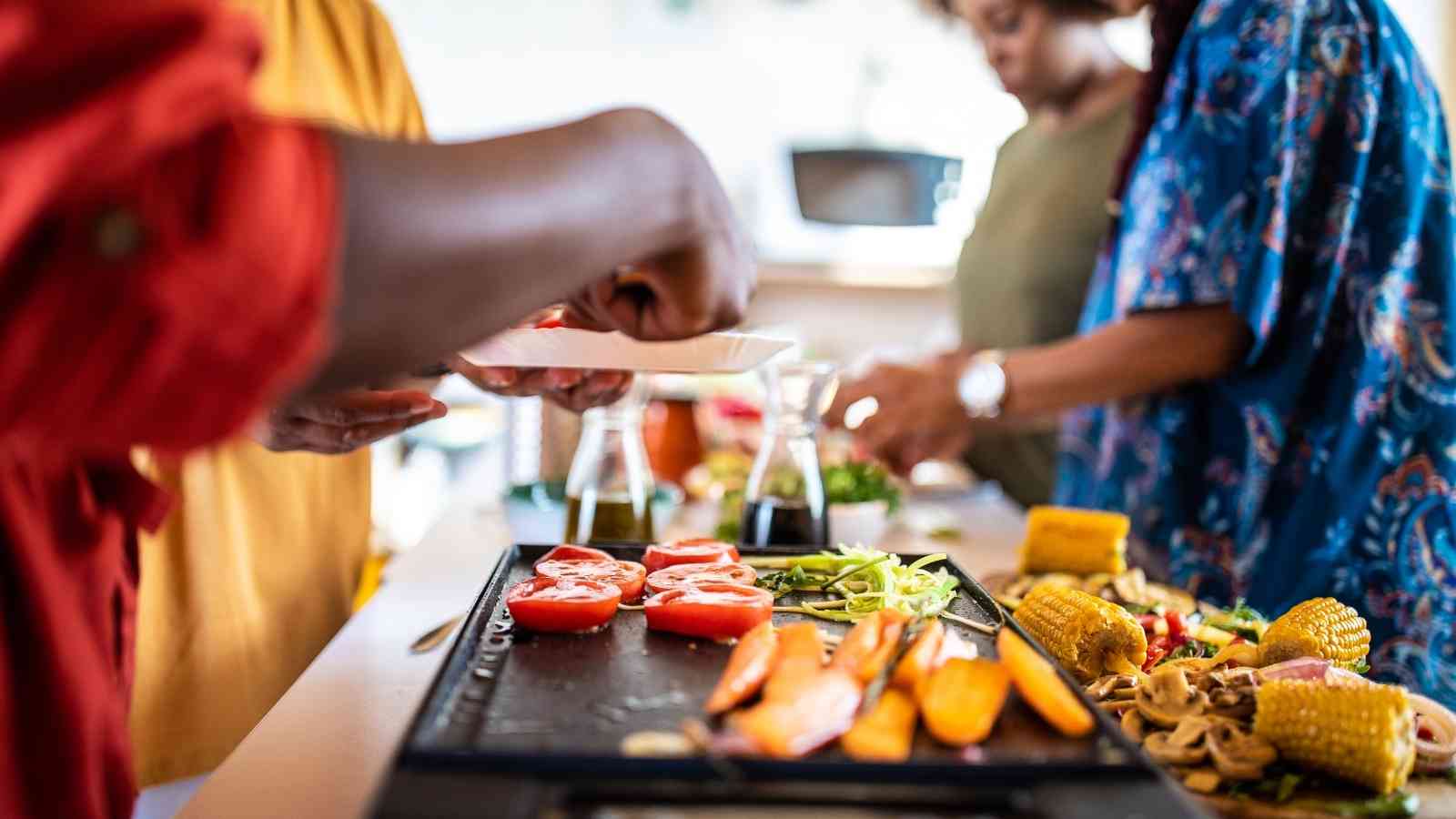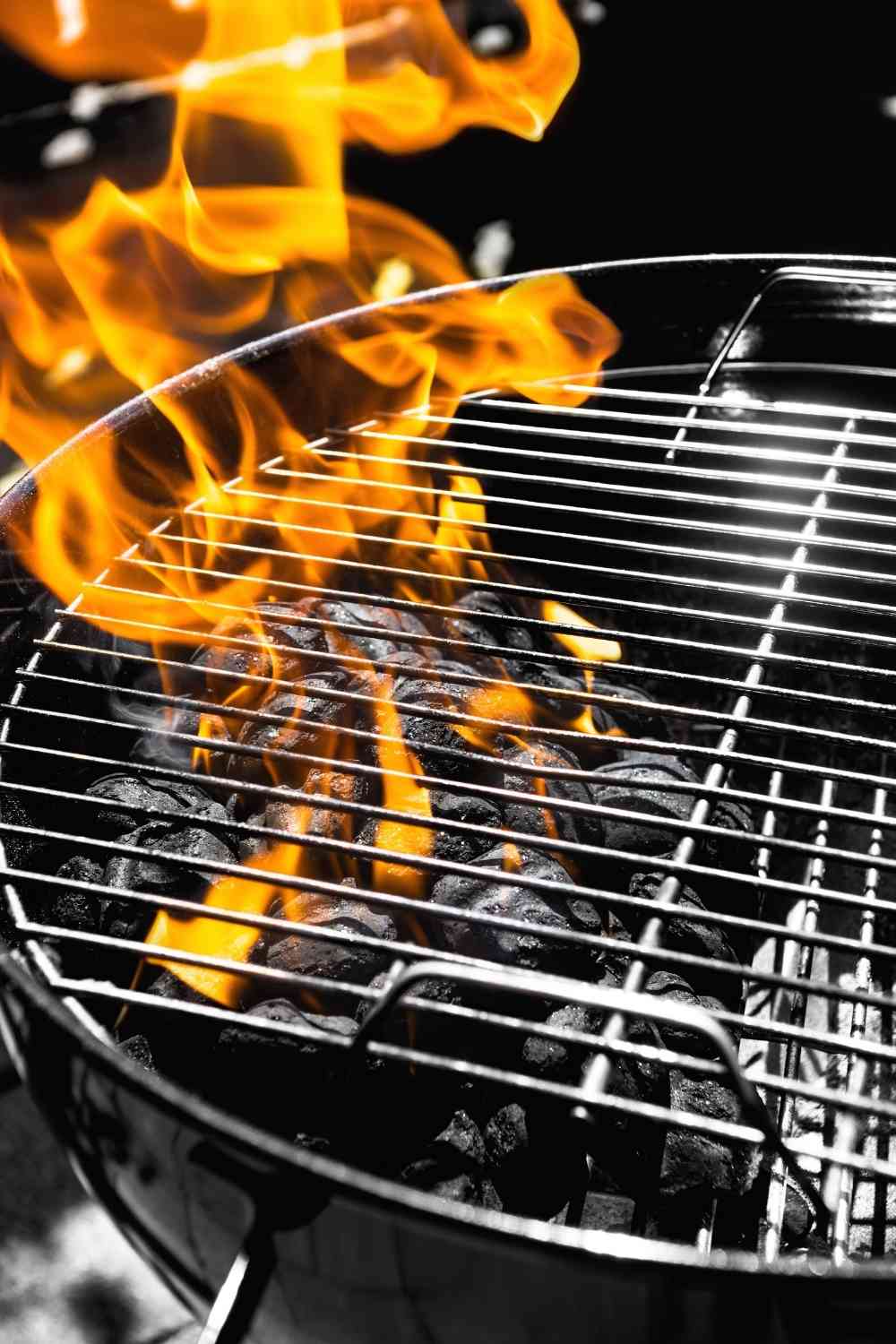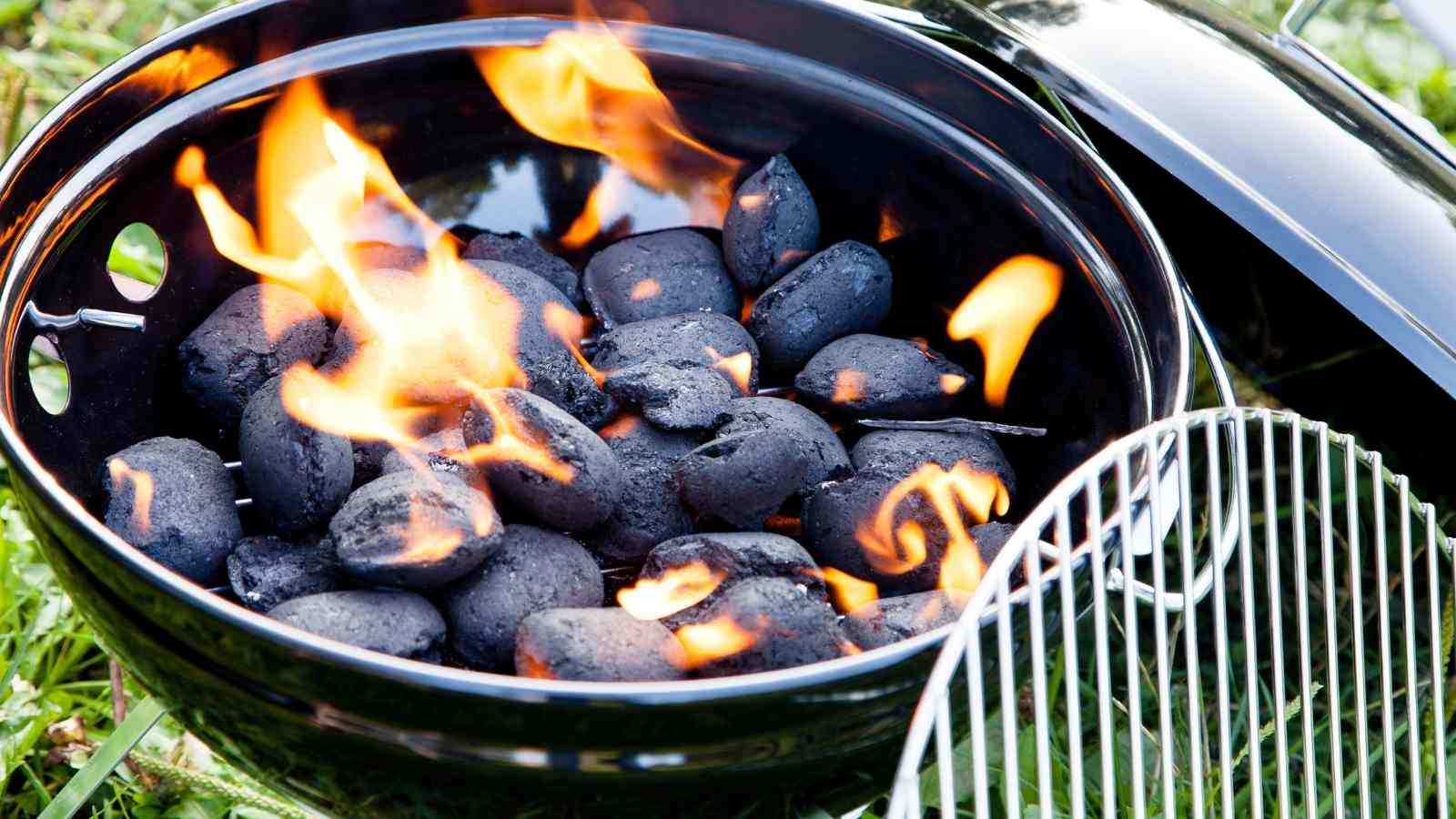Grilling, at its most basic level, is cooking food over a hot flame. Grills come in many shapes and sizes, from a simple $20 charcoal barbecue to a built-in $15,000 gas grill, but the principles remain the same. It doesn't matter what kind of grill you use after you've mastered the appropriate technique.

Jump to:
- Basic Grilling Instructions
- On the Grill, How to Cook Meat and Vegetables
- Guide to Grilling Temperatures
- Food Should Be Moved Around the Grill
- Cook on an indirect heat source
- Know When It's Done
- Operation of a Gas Grill
- Is the grill lid open or closed?
- Grilling Using Charcoal
- Getting Ready for Charcoal Grilling
- Constructing a Charcoal Fire
- Keeping the Charcoal in Good Shape
Basic Grilling Instructions
These fundamentals will assist you in learning how to grill. Always remember to adhere to the following guidelines:
- To avoid sticking, keep your grill grate clean.
- Allow plenty of time to prepare and heat up the grill before starting to cook.
- Keep an eye on what you're grilling at all times.
- To suppress flare-ups, do not use water spray bottles; this will simply make the fire worse. Too much fat and too much heat induce flare-ups. Trim any extra fat from any meat you want to cook ahead of time, and transfer the meat to a different portion of the grill as you turn it to spread out the fat drips.
- Make sure you have the right grilling gear for the task.
- Not the grill, but the food. Because oil burns away at high temperatures, oiling the frying grate is unnecessary.
- To let the taste to soak in, season your dish at least an hour before grilling.
- Sugary sauces or marinades should not be used to cook meat over an open flame since they cause it to burn.
- Grilled food, especially raw meat, should be served on a clean dish.
- Keep your grill away from any combustible materials, such as lighter fluid, fences, and your home.
On the Grill, How to Cook Meat and Vegetables
A hot grill will provide a high temperature, allowing food to be cooked quickly and thoroughly. Turn increase the heat and cook thin slices of meat and smaller things like kebabs, steaks, chops, burgers, and hot dogs rapidly. Because of the quick pace, you must keep an eye on the grill and, more importantly, the meal.
However, grilling everything hot and quick isn't the way to go. Lower temperatures are ideal for grilling fish, poultry, vegetables, and fruit; aim for medium heat with these dishes. This includes lowering the temperature on a gas barbecue and establishing a smaller fire on a charcoal grill. Although you should still keep an eye on these meals, they will take longer to cook at a lower temperature.
Guide to Grilling Temperatures
The temperature controls on a gas grill provide an excellent indicator of how high or low the heat is. How do you know how hot medium-high heat is if you have a charcoal grill? There is a technique for gauging temperature with only your hand. Hold your palm just over the cooking grate and count down the seconds until you can no longer stand the heat (it will feel like your skin will burn). The lower the heat, the longer you can keep your hand over the fire. This method works on both gas and charcoal barbecues. The following are the rules to follow:

- Low heat for 5 seconds
- 4 seconds equates to a medium level of heat.
- 3 seconds = high-medium heat
- 2 seconds Equals a lot of heat
- 1 second = Extremely hot
Food Should Be Moved Around the Grill
A prevalent grilling fallacy is that grilled dishes should not be turned too often. When necessary, flip the pan to ensure equal frying. To prevent flare-ups, move your items around the grill and make use of the available area. Don't be concerned, however, since flare-ups are unavoidable, particularly when eating high-fat meals like steak.
Cook on an indirect heat source
Certain foods benefit from indirect heat cooking distant from the heat source. This implies the food should be on one side of the grill while the fire is on the other. It's ideal for cooking huge items like full chickens, beef roasts, racks of ribs, and any other bird or meat that requires a long cooking period. Indirect grilling helps you to cook the protein through to the center before the exterior burns. If you have a big grill with many burners, it's best to put the meal in the center and ignite the burners on all sides. Place the food on one side and start the burner on the other if your gas grill is too small for this layout. To cook the food evenly, you'll need to rotate it.
Know When It's Done
While there are some basic grilling time requirements, determining when food is ready may be difficult. There are three rules to grilling success:
- Law 1: You can cook food for extended periods of time, but you can't "uncook" it.
- Law 2: Meat that isn't fully cooked may kill you.
- Law 3: Trust and verify is the third law. When it comes to cooking to the perfect doneness, experience is the finest tool you have, but a meat thermometer is required to ensure you do it properly.
Operation of a Gas Grill
Control is the most fundamental advantage of a gas barbecue. You can simply change the temperature with the flick of a knob to get it where you want it. Before using your grill, read the owner's handbook and follow these procedures for a good gas grilling experience:
- Turn on the gas supply and uncover your grill.
- Turn up the heat on the control valves and ignite the grill (follow your grills instruction manual).
- Start by preheating your grill. In around 10 minutes, a decent grill should be hot.
- Clean the grilling surface using a grill brush.
- Place your meal on the hot grill and stay there until it cooks. The meal will cook fast if you leave, and you risk scorching it.
- Flip as needed and remove when finished.
- For a few minutes, leave the grill on high.
- Clean the cooking surface using your grill brush.
- Turn off the gasoline supply and the control valves.
- Replace the lid when the grill has cooled fully.
Is the grill lid open or closed?
The lid of most gas grills works best when closed. To create the strong heat required for high-temperature grilling, the lid must be lowered. Indirect grilling also necessitates the use of a cover.
Grilling Using Charcoal
Compared to gas grilling, charcoal grilling is considerably more of an art form. It provides a more realistic grilled taste and barbeque experience, but it is not as handy or dependable as a gas grill. There is no temperature control valve on a charcoal barbecue, no matter how costly or beautiful it is. The heat is controlled by how you light a fire, how you adjust the vents, and how well you keep the lid on. It takes a little more time to learn and master, but it's just as flexible as a gas grill. Charcoal grills can achieve temperatures of over 700 degrees Fahrenheit and sustain temperatures of roughly 200 degrees Fahrenheit. You can sear a steak and cook it low and slow at the same time. A rotisserie is available on many charcoal barbecues.

Getting Ready for Charcoal Grilling
More than simply the grill and the charcoal are required for successful charcoal cooking. When it comes to charcoal grilling, there are a few things to keep in mind.
- Keep the charcoal grill clean; ashes and dirt obstruct vents and make it harder to manage the fire.
- Check the vents for functionality; rusted or corroded vents are difficult to adjust.
- Have a pair of fire-resistant gloves on hand. Be aware that charcoal grilling necessitates the handling of hot objects; be prepared.
- Use a charcoal chimney or a charcoal starter to help ignite the charcoal.
- Place the grill in a secure location that will not be knocked over.
- Grilling equipment should be kept near at hand.
- Move the flaming embers around within the grill using a sturdy stick or barbecue utensil.
- Practice. Mastering charcoal grilling takes time, but it's well worth it.
Constructing a Charcoal Fire
Building a charcoal fire requires practice. Here are a few pointers to get you started:
- To start your fire, light the charcoal and then spread it out.
- It takes 10 to 15 minutes for charcoal to reach the right temperature.
- When charcoal is ready to grill, it will be covered with ash, look white or gray, and be quite hot.
- Spread your charcoal in a single layer on the coal grate for a medium fire.
- Light enough charcoal on the coal grate to create a double layer of coals for a hot fire.
- When the charcoal is ready, put it all to one side of the coal grate and cook on the other side of the grill for an indirect fire.
Keeping the Charcoal in Good Shape
A charcoal barbecue, unlike a gas grill, does not allow you to simply "turn on" and "turn off" the heat. Building a fire is required for "turning on," and correctly shutting down the grill is required for "turning off." When you're through cooking, close the lid and vents of a decent charcoal barbecue. The charcoal will not burn due to a lack of oxygen.
That doesn't imply the charcoal is safe to handle; hot coals may remain hot for up to 24 hours, so don't throw them away or you'll start a fire. Because even the tiniest ember might start a fire, fully extinguish ashes before discarding them.
You might also preserve the leftover charcoal. Remove the cooking grate, mix up the coals, reinstall the lid, and shut the vents when you're finished. Add new charcoal to what was left behind and fire it the next time you grill. You may decrease your charcoal usage in half and save money if you are cautious.
When selecting a kind of charcoal, keep it as clean as possible. There are several charcoals on the market that include additives. It's preferable to acquire unprocessed natural charcoal and ignite it using a charcoal chimney, an electric starter, or natural charcoal lighters. Your food will taste better, and there will be no odors in the air.
The purpose of grilling, regardless of technique, is to have fun while cooking wonderful meals. Take your time, put yourself in the best position to succeed, and keep trying.




